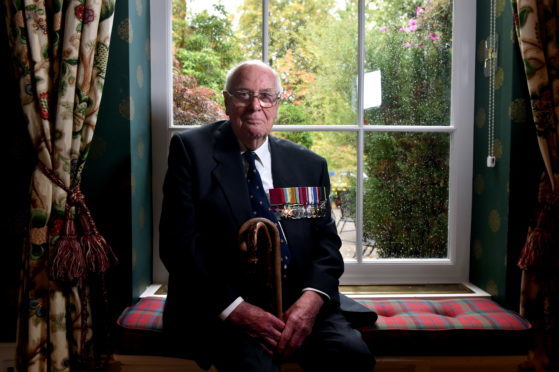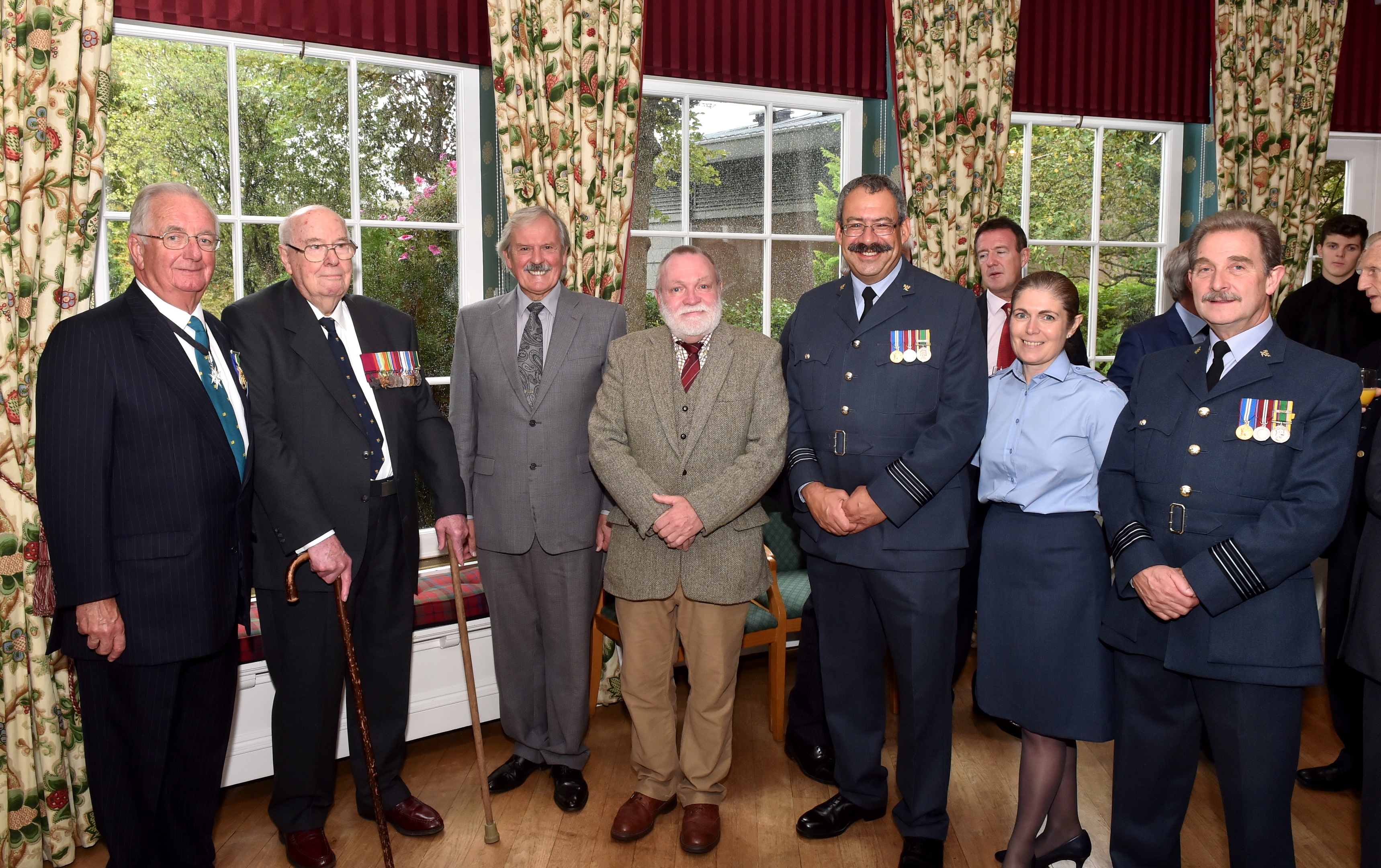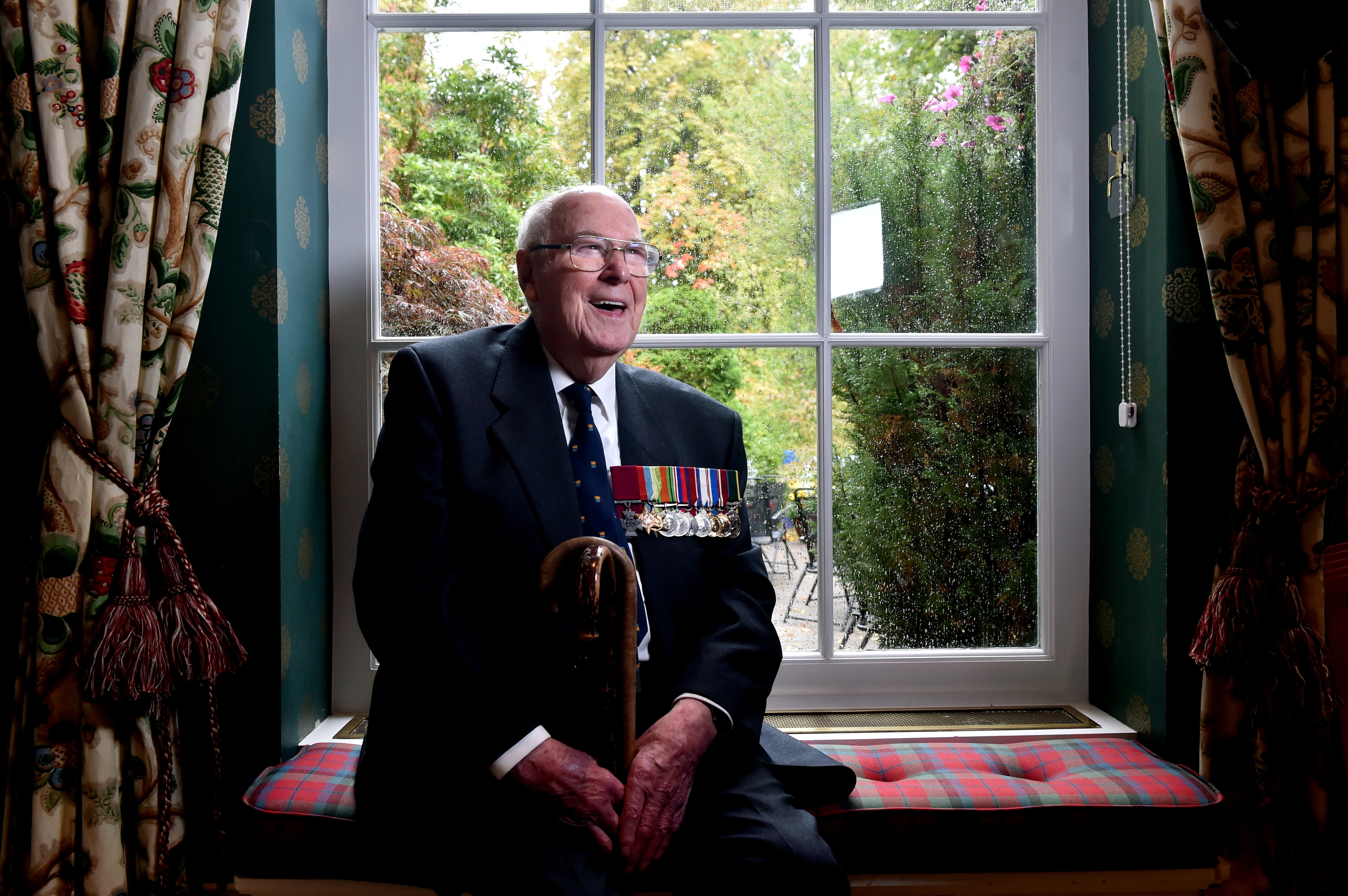The oldest surviving Victoria Cross recipient was among the guests of honour at a celebration of the RAF’s 100th year in Aberdeen.
The Royal Northern and University Club staged a gathering at its home on Albyn Place yesterday to highlight the contributions its members had made to the air force over the past century.
Among more than 60 attendees was John Cruickshank VC, a 98-year-old Aberdeen man who was awarded the accolade for gallantry after sinking a German U-boat during the Second World War.
The war hero, who sustained 72 wounds during the mission, said the function yesterday was “a very special day for the club”.
Club chairman, Jimmy Hutchison, explained that the day had partly been arranged to pay tribute to Mr Cruickshank.
Mr Hutchison said: “He is such a modest man, who does not like a fuss to be made of him, but the truth is that he is a very special individual.
“It has proved very popular, there was a waiting list of members wanting to attend.”
Robert Gordon’s College pupil Daniel Milne, 17, piped the guests into the building as the gathering began.
Warm greetings were exchanged as old friends – many dressed in their military regalia – became reacquainted over a drink.
Aberdeen woman Eleanor Henderson wore the medals her dad James Fraser was awarded for serving in the famous 617 “Dambusters” squadron in the Second World War.
She said: “The family is so proud of what my dad achieved in winning a distinguished flying medal and I wanted to represent him.
“When I heard about this, I knew I wanted to go along and wear his medals. It is nice to remember him.”
The main speaker was Group Captain Robert Kemp, an RAF legend who gained the nickname “Buccaneer Bob” during a 20-year career as a weapons instructor flying Buccaneer fast jets.
The event was the idea of club member, Alex Urquhart, who said: “We wanted to acknowledge 100 years of the RAF and the club members who have been associated with it throughout its history.”
Mr Hutchison said the Airman’s Grace before the guests tucked into lunch.
The Royal Northern and University Club was formed in 1979 when the Royal Northern Club – which dates back to 1854 – and the 1889-founded University Club were amalgamated.
Who is John Cruickshank
Born in Aberdeen in May 1920 and it was at the age of 24 that he completed the act of heroism that has enshrined his name in military history.
Mr Cruickshank, then a flying officer, piloted a Catalina anti-submarine flying boat from Sullom Voe on July 17, 1944, on a patrol north into the Norwegian Sea.
When a U-boat was sighted on the surface, he launched an attack on the vessel, with the Catalina struck by “intense and accurate fire” during the sortie.
His navigator was killed, while his second pilot and two other members of the crew were injured.
Mr Cruickshank himself was struck in 72 places, receiving two serious wounds to his the lungs and 10 to his lower limbs.
Nonetheless, he still managed to release the depth charges himself, perfectly targeting and sinking the submarine.
Though bleeding profusely, Mr Cruickshank then insisted on resuming command until he was satisfied the damaged aircraft was under control, that a course had been set for base and that all the necessary signals had been sent.
He even refused morphine in case it impaired his flying ability. It took more than five hours to safely bring the plane home.
The pilot eventually had to be given a blood transfusion before being taken to hospital.
If further evidence of his heroism were needed, once assessed by doctors it became clear his injuries were such that he would never again fly in command of an aircraft.
He was presented with the Victoria Cross by King George VI in 1944 and left the RAF in 1946 to return to his career in banking.












